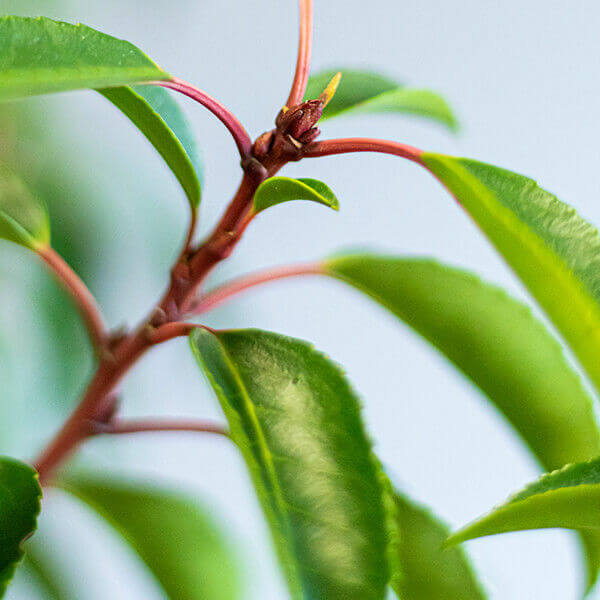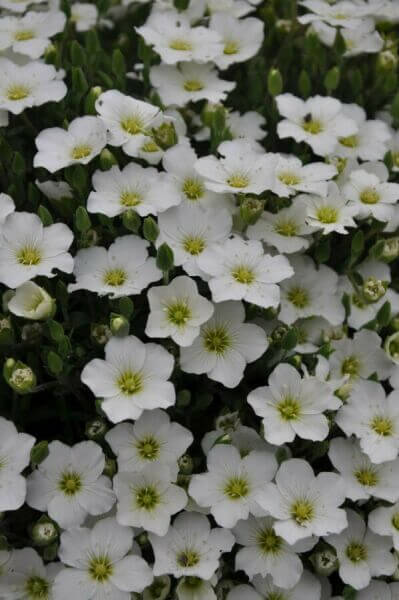Hedging Plants For Large Gardens
Hedging Plants For Large Gardens
Blog Article
Hedge Plants For Sandy Soil
Boost your garden's attraction with lavish hedge varieties such as Yew (Taxus), Thuja, Laurel, Photinia, and Bamboo, commemorated for their structural integrity and ecological benefits.
Yew and Thuja offer evergreen coverage and winter strength, while Laurel offers fast development and broad, fragrant leaves.
Photinia adds seasonal beauty with its vibrant red foliage, and Bamboo lends a low-maintenance, peaceful atmosphere.
These hedges improve air quality, minimize sound, and create tranquil, personal areas.
Proper planting, spacing, and maintenance guarantee energetic growth and environmental consistency.
Check out how these lavish varieties can elevate your garden's appeal and well-being.
Key Takeaways
Change Your Garden With Lush Hedge Ranges
- Select Yew for its thick, evergreen growth and unrivaled durability.
- Go with Laurel for its quick development and broad leaves, ensuring quick privacy.
- Select Photinia for its vibrant seasonal foliage, which turns a striking dark red.
- Utilize Bamboo for a low-maintenance, winter-hardy hedge with visual appeal.
- Area plants 2-3 per meter and prune regularly for optimal growth and health.
Popular Hedge Plants
When transforming a garden with rich hedge varieties, it's important to think about popular hedge plants such as Yew, Thuja, Laurel, and Photinia due to their special attributes and advantages.
Yew (Taxus) is extremely respected for its durability and thick, green development, making it a prime choice for withstanding landscapes.
Thuja is noted for its evergreen foliage and robust winter resilience.
Photinia adds seasonal vibrancy with red leaves that darken in time, creating dynamic visual appeal.
Laurel offers quick development and aromatic, broad leaves, suitable for quick privacy.
Additionally, Bamboo is an excellent option for atmosphere, providing a low-maintenance, winter-hardy choice that enhances the garden's aesthetic with its classy, swaying walking canes.
These choices accommodate a variety of horticultural requirements and choices.
Benefits of Garden Hedges
Garden hedges offer a multitude of advantages, making them a valuable addition to any landscape. These natural barriers are affordable to implement and supply substantial wind security, enhancing air blood circulation and adding to noise reduction. The thick foliage of hedges like Thuja and Beech guarantees privacy by blocking exposure, developing a remote and peaceful environment.
Hedges likewise play an important role in microclimate guideline, providing a steady environment that fosters plant development and reduces temperature changes. Their intricate leaf structures filter toxins, improving air quality and adding to a healthier garden community.
Moreover, hedges master sound reduction, soaking up and deflecting sound waves to lower ambient sound levels. This dual functionality of supplying both visual and acoustic personal privacy enhances the general harmony and aesthetic appeal of any garden.
Planting and Maintenance Tips
For an effective hedge, meticulous preparation of the planting location is vital. Ensure the soil has appropriate pH and drain to support strong root development.
Space the plants properly for the picked species. Water the hedge often throughout its initial development stage, adjusting as required with seasonal changes.
Carry out a organized bug control and illness prevention technique, utilizing organic or chemical treatments when required. Regularly inspect for aphids, termites, and fungal infections.
Apply mulch to maintain wetness and suppress weeds. Seasonal pruning promotes dense growth and air flow, vital for plant health.
Following these guidelines will help you cultivate a vibrant, well-maintained hedge that enhances the beauty of your garden.
Spacing and Cutting Guidelines
Spacing and Trimming Standards
Correct spacing and trimming are essential for cultivating healthy, visually appealing hedges. Appropriate spacing guarantees each plant receives sufficient nutrients, light, and airflow.
Follow these standards for ideal hedge maintenance:
- Spacing: Position hedge plants 2-3 plants per meter to motivate robust development.
- Pruning Techniques: Routine pruning is vital for preserving desired hedge height and shape. Cut new development in summertime and cut back older wood throughout winter.
- Seasonal Care: Change trimming schedules and approaches according to seasonal requirements to ensure plant health.
- Hedge Height: Frequently monitor and cut to maintain the wanted hedge height and attain consistent looks.
Complying with these steps will guarantee your hedge flourishes, boosting both the appeal and functionality of your garden.
Picking the Right Hedge
Choosing the Right Hedge
Choosing the proper hedge involves examining factors such as mature height, foliage density, and ecological strength. Successful hedge plant selection needs understanding each species' growth attributes and site-specific adaptability.
For example, Yew (Taxus) provides exceptional durability and dense growth, while Thuja is noteworthy for its winter durability. In addition, thinking about maintenance requirements is essential; fast-growing species like Laurel or Privet demand routine cutting, whereas low-maintenance alternatives like Bamboo or Ivy may be preferable for those seeking minimal upkeep.
Environmental factors such as soil type, light availability, and moisture conditions should also guide the selection process. This careful approach ensures the chosen hedges will thrive, supplying both functional and aesthetic benefits to the garden landscape.
Delivery and Planting Advice
To guarantee your hedge plants grow, they need to be provided by specialized couriers and planted quickly upon arrival.
Follow these important steps for effective planting:
- Soil Preparation: Enrich the soil with natural matter to enhance drain and nutrient content.
- Planting Depth: Create a trench two times the width and equivalent to the depth of the root ball.
- Watering Methods: Water thoroughly after planting, keeping the soil regularly damp but not filled.
- Mulching: Use a layer of mulch to keep moisture and reduce weeds.
Client Support and Service
Offered the important role of prompt assistance in horticultural pursuits, our consumer support team is offered six days a week through telephone, e-mail, and social media to use expert advice and quickly address any issues. Their dedication to fast response times guarantees customer fulfillment by dealing with questions related to plant health, optimum planting methods, and maintenance schedules.

This comprehensive support group, strengthened by a stellar 9.3/ 10 consumer score, highlights our dedication to improving the gardening experience for every customer.
Frequently Asked Concerns
How Long Does It Consider Hedge Plants to Establish?
Hedge plants normally require one to 3 years to end up being completely developed, with the precise period differing by types and growing conditions.
Effective care throughout this critical period is necessary for robust growth. Constant watering, alert weed control, and appropriate fertilizer application are critical in promoting strong root advancement.
For example, fast-growing types like Laurel might establish more rapidly, while slower-growing ranges such as Yew might take longer. Persistent upkeep speeds up the facility process, resulting in thick and healthy hedges.
What Are the Best Hedge Plants for Privacy?
The concern of the finest hedge plants for personal privacy involves assessing evergreen and deciduous alternatives.
Evergreen hedges like Thuja, Laurel, and Cypress supply year-round coverage, ensuring continuous personal privacy.
On the other hand, deciduous hedges such as Beech use seasonal personal privacy, shedding leaves in cooler months.
Key maintenance tips for privacy hedges include regular trimming, fertilizing in spring, and proper spacing-- generally 2 to 3 plants per meter.
Furthermore, consistent watering and persistent weed removal are essential for promoting healthy, dense growth.
Can Hedge Plants Attract Wildlife to My Garden?
Yes, hedge plants can attract wildlife to your garden by providing essential benefits like shelter, food, and nesting websites, therefore boosting regional biodiversity. For circumstances, yew, holly, and laurel are outstanding for drawing in birds, while ivy supports a variety of insects.
Nevertheless, it is essential to note that there are some downsides, such as increased upkeep to handle insects and regular upkeep. Thoroughly choosing and preserving hedge varieties can assist stabilize these benefits and drawbacks, eventually promoting a vibrant and sustainable community in your garden.
Are There Any Blooming Hedge Plants Available?
Yes, there are flowering hedge plants available that can boost the charm of your garden.
For instance, Elaeagnus, also called Olive Willow, produces fragrant white flowers in the fall, including a touch of beauty.
Photinia, another popular option, showcases dynamic red leaves that grow into a rich green, developing a dynamic visual result throughout the seasons.
To ensure these plants grow, it's vital to practice correct pruning techniques and seasonal upkeep, such as trimming new development in the summer and cutting back in the winter season.
These measures will assist maintain the health and visual appeal of your flowering hedges.
How Do I Prevent Insects in My Hedge Plants?
To avoid pests in hedge plants, utilize natural bug control methods and preserve appropriate hedge care. Present advantageous bugs like ladybugs, which victimize harmful insects, to produce a well balanced environment.
Regularly examine your hedges for indications of problem and without delay remove any affected parts to prevent the spread. Guarantee the health of your hedges by applying balanced fertilizers and offering sufficient water.
Make use of mulching to maintain soil wetness and correct spacing to lower plant tension and promote robust development. These practices jointly assist in decreasing bug concerns and keeping a healthy hedge.
Conclusion
In essence, selecting the best hedge varieties such as Yew, Thuja, and Laurel can transform any garden into a peaceful haven. These plants provide year-round get more info greenery, boost visual appeal, and deal practical benefits like sound decrease and wind security.
Appropriate planting techniques, accurate spacing, constant watering, and seasonal cutting are important for optimal development.
Trusted shipment services and professional customer assistance make sure a seamless experience from purchase to planting, making it simpler than ever to raise your outdoor area.
Garden hedges provide a wide range of benefits, making them an important addition to any landscape. These natural barriers are economical to implement and supply considerable wind defense, improving air circulation and contributing to sound reduction. The thick foliage of hedges like Thuja and Beech ensures personal privacy by obstructing presence, producing a tranquil and secluded environment.

Pruning Methods: Regular pruning is important for maintaining desired hedge height and shape. Cut brand-new growth in summer and cut back older wood during winter season.
Report this page